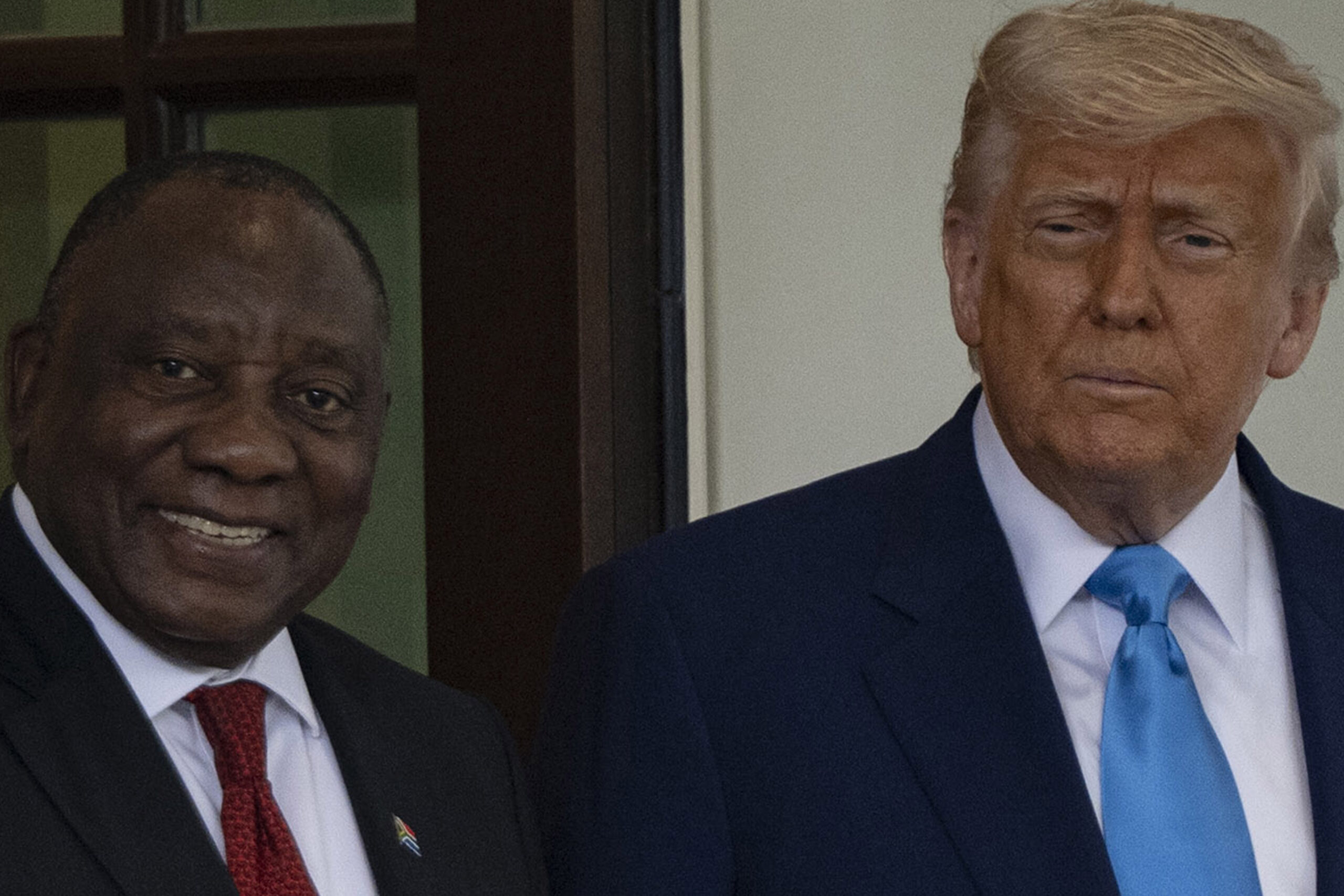
Mahomed Faizal, Cape Town
In the grand halls of the White House on May 20, two vastly different political figures came face-to-face for a meeting that was as symbolic as it was significant. President Cyril Ramaphosa of South Africa — seasoned negotiator, trade unionist, and a man who once helped write his country’s democratic future — sat across from Donald Trump, the U.S. President known for his brashness, populism and incendiary rhetoric.
What followed was not just a bilateral discussion, but a collision of worldviews.
Despite the provocations and misinformation hurled his way, Ramaphosa remained calm, composed and unruffled. His bearing recalled the quiet strength he had displayed three decades ago during South Africa’s fragile transition from Apartheid to democracy — a period when the stakes were no less than peace or civil war.
For those who remember the early 1990s, Cyril Ramaphosa is not just South Africa’s current President, he is a living symbol of its democratic birth. Then a rising figure in the African National Congress (ANC) and General Secretary of the powerful National Union of Mineworkers, Ramaphosa was handpicked by Nelson Mandela to lead the ANC’s negotiation team during the Convention for a Democratic South Africa (CODESA).
It was Ramaphosa who sat across from the Apartheid regime’s toughest negotiators, drawing up the framework for a democratic constitution and ensuring the country transitioned without descending into chaos. Later, he would chair the constitutional assembly that drafted what is still regarded as one of the most progressive constitutions in the world.
That same calm resolve was on full display this week in Washington.
The meeting began with Trump, never one to shy away from controversy, presenting what he claimed was evidence of a “genocide of white farmers” in South Africa — a claim widely debunked by international observers, international media, fact-checkers and the South African government itself.
Trump, visibly agitated and leaning heavily on far-right sources, presented unverified social media videos and inflammatory newspaper clippings. Ramaphosa, unfazed, responded not with emotion but with fact.
“There is criminality in our country. People who do get killed unfortunately through criminal activity are not only white people, but the majority of them are also black people,” Ramaphosa said.
Ramaphosa reminded Trump — and the room — of South Africa’s painful colonial legacy, of the dispossession of black South Africans, and of the constitutional imperative to redress those inequalities. Trump appeared unmoved, muttering under his breath while waving images that turned out to be from a report about women being killed in the Democratic Republic of Congo.
A prelude to Ramaphosa’s visit was the quiet diplomacy behind the scenes. South African white billionaire Johann Rupert, a longtime economic power broker with influence in both hemispheres is reported to have made a few strategic calls in the days leading up to the visit. Rupert was apparently frustrated with Trump’s portrayal of Afrikaners that were recently given asylum in the US as “refugees” escaping the “genocide”. Rupert reportedly urged Trump to correct this narrative and engage more constructively with Ramaphosa.
Also offering support was golfing legend Ernie Els, a personal friend of Trump and national icon in South Africa. Els made an appearance at the White House to vouch for South Africa, while also make a faux pas by referring to US support for the Apartheid regime during its war with the Angolan army and liberation forces. Despite their efforts, Trump remained combative. His frustrations, it became clear, were not just about land reform.
Part of the right-wing Zionist campaign against South Africa, which Trump has taken up and has deeply irked Washington is South Africa’s high-profile role at the International Court of Justice (ICJ), where Pretoria led a case accusing Israel of genocide in Gaza in 2023. The move, applauded by many in the Global South, enraged right-wing factions in Washington.
South African has always stressed its commitment to international law and its right to speak out against human rights abuses wherever they occur.
Yet, even in the fog of political tension, the meeting yielded concrete outcomes. The meeting led to a strong commitment to ongoing US-South Africa engagement, especially in trade and industry. President Ramaphosa emphasized continued talks on investment, tariffs, and U.S. market access via the African Growth and Opportunity Act (AGOA). He confirmed regular dialogue between both nations’ officials on key trade issues. Ramaphosa welcomed the firm agreement to maintain active engagement, calling it a key outcome.
Ramaphosa confirmed the G20 was discussed, stressing its global importance and the U.S.’s key role. Earlier this year, the U.S. indicated it would not attend the summit, raising concerns. Ramaphosa, as current G20 Chair, urged President Trump to reconsider and attend the event in South Africa. He said he hopes to hand over the presidency to Trump in person, not to an “empty chair.”
South Africa’s position at the G20 has grown more influential, and Ramaphosa has emerged as a voice for equitable global development, climate justice and reform of international financial institutions.
Ultimately, the Ramaphosa-Trump meeting was more than a diplomatic event — it was a study in contrasts. One man, forged in the fires of apartheid-era negotiations, unshaken by racist invective or ahistorical narratives. The other, unable — or unwilling — to separate fact from fiction, still reeling from a world that has changed beyond his grasp.
But Ramaphosa’s grace under pressure won the day.
Photo: U.S. President Donald Trump (right) welcomes South African President Cyril Ramaphosa (left) upon his arrival at the White House in Washington, D.C., on May 21 (Credit: Celal Güneş/Anadolu Agency)